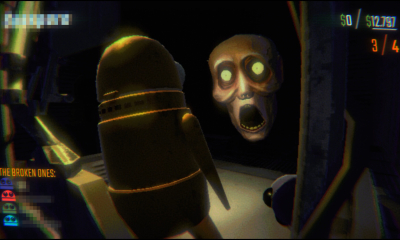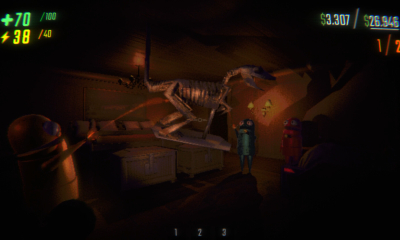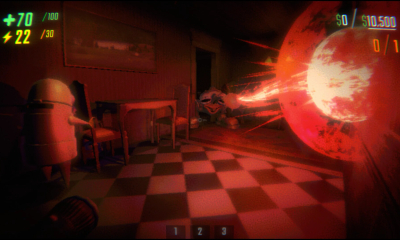Enigmatic Odyssey: Unraveling the World of R.E.P.O.
Stepping into the Adventure
I remember the first moment I launched the R.E.P.O. Game; a flood of curiosity mixed with excitement urged me on. As I navigated through an interface that immediately promised an experience like no other, I embarked on a journey that has challenged my perceptions of interactive entertainment. The game’s introduction to its unique world felt like stepping into a living, breathing canvas where every detail was carefully crafted to spark my imagination. I found myself drawn in by the intricacy of its art direction and the subtle hints of story woven into every level. This was not just a game to me—it was an invitation to explore a universe of decisions, opportunities, and ever-present surprises.
Navigating the Core Gameplay Mechanics
One of the initial aspects that captivated my interest was the intuitive gameplay mechanics. The controls felt fluid and natural from the start, allowing me to navigate an expansive terrain filled with hidden pathways and complex puzzles. Every action I took was met with a satisfying response, whether I was maneuvering through a tight corridor of challenges or engaging with interactive elements scattered throughout the environment. I spent hours experimenting with various strategies to overcome obstacles, and each method I discovered felt innovative in its own right. The game’s responsiveness ensured that I was not held back by frustration, instead propelling me forward in a rhythm that was engaging and thought-provoking.
Exploring the Visual Artistry
The visual aspect of the R.E.P.O. Game is one of its most distinctive features. The developers have woven together an array of styles that create a hybrid of familiar realism and surreal artistry. I adored exploring each level, feeling as though I was walking through an ever-changing painting. Every corner of the game world presented a new spectacle, from the delicate interplay of natural light to the shadows dancing on textured surfaces. The color schemes were carefully curated to evoke mood and emotion, and I found that each shift in scenery corresponded with a shift in my own internal state of anticipation and discovery. I was particularly enchanted by the level of detail present in each environment, which made my journey through the game feel both personal and grand.
Deep Dive into the Soundscapes
Sound has always played a profound role in my gaming experiences, and R.E.P.O. did not disappoint in this regard. The auditory experience is as immersive as the visual one, expertly blending ambient tracks with dynamic sound effects that adapt to the unfolding action. I appreciated how the score surged during moments of tension and calmed during periods of reflective exploration. The soundscapes worked harmoniously with the environment, drawing me deeper into the narrative and enriching the overall atmosphere. I spent several sessions simply listening to the layered musical compositions, often pausing to appreciate how the music underscored silent, reflective moments, giving life to an otherwise static scene.
Interactivity and World-Building Dynamics
Interacting with the game's world felt both organic and richly layered. Every object I encountered, from peculiar artifacts to interactive terminals dotted throughout the levels, revealed fragments of the larger tapestry behind R.E.P.O. It was as though each element was a piece of a puzzle waiting to be assembled. I particularly enjoyed how the environment itself responded to my actions—altering pathways, unlocking secret areas, or even shifting the mood of a particular scene. The game features cleverly hidden Easter eggs that not only enhanced my sense of exploration but also provided insights into the lore and background of the world. These interactions transformed the act of exploring into a deeply personal quest, allowing me to leave my mark on a space that felt alive and reactive.
Refining Skills Through Progressive Challenges
In R.E.P.O., progression does not come in the traditional linear format but rather through a series of challenges designed to refine my skills and provoke creative thinking. I found myself learning and evolving with each encounter, adapting my strategies to overcome cleverly designed obstacles. The progression mechanics allowed me to choose paths that resonated with my play style, whether focusing on agile maneuvers or intricate problem-solving sequences. This system of trial and self-improvement provided a rewarding sensation, with every small success acting as a stepping stone towards mastering greater challenges. The way these elements interplayed added a layer of personalization to the game, making every session a bespoke experience tailored to how I chose to engage with the mechanics.
Storytelling and Narrative Layers
Though the narrative of R.E.P.O. is not delivered in a straightforward manner, I discovered a rich tapestry of stories embedded within the world. Unfolding the narrative required keen observation and an eagerness to piece together cryptic hints scattered throughout the game. The lore was unobtrusive yet ever-present, urging me to reflect on subtle dialogues, cryptic environmental cues, and occasional flashbacks that surfaced unexpectedly. I was fascinated by how the storytelling leaned heavily on the philosophy of discovery, where every character I met and every fragment of dialogue contributed to an overarching enigma. This narrative technique required me to actively engage my curiosity, and I found that it deeply enhanced my emotional investment in both the characters and the world they inhabited.
High-Octane Action Sequences
Within the maze of puzzles and exploration, R.E.P.O. also delivered moments of high-intensity action that kept my adrenaline pumping. I encountered several sections where timing and precision were the keys to progressing. These fast-paced sequences were designed to test my reflexes and judgment under pressure, demanding both strategic planning and spontaneous decision-making. The transition from a slow, exploratory pace to sudden bursts of action was executed with perfect balance, ensuring that the game never felt monotonous. I found these segments to be incredibly engaging, as they broke up the rhythm of the journey with unexpected thrills that kept me on the edge of my seat.
Multiplayer Engagement and Social Dynamics
One of the surprising elements of R.E.P.O. was its robust multiplayer system that allowed me to team up with friends and strangers alike. Navigating the game in a cooperative setting introduced a whole new level of strategic depth. We tackled complex puzzles together and exchanged insights on hidden secrets, which often led to moments of genuine camaraderie. I appreciated the subtle ways in which the game encouraged collaboration without overshadowing the single-player experience. The multiplayer mode was not merely a side feature but a fully integrated aspect that deepened my overall connection to the game. Social interaction was built into the very design of the game world, making it a truly shared journey where individual efforts contributed to a collective narrative.
Intuitive Controls and Customizability
An often overlooked but crucial aspect of the R.E.P.O. Game is its attention to control customizability. I found that the developers had put significant thought into making every command feel intuitive, with an extensive range of settings that allowed me to tailor the experience to my preferences. Whether I adjusted the sensitivity of the controls or reconfigured the button layout to suit my muscle memory, I was able to create a version of the game that felt perfectly aligned with my habits. This flexibility enhanced my overall immersion, as I no longer had to fight against unresponsive controls or adapt to an arbitrary setup. Instead, I was free to focus on the exploration and strategy, confident that the game itself would be an extension of my own natural instincts.
Environmental Challenges and Adaptive Puzzles
The world of R.E.P.O. is a labyrinth of surprises, with puzzles that adapt based on my progress and the choices I make along the way. Every challenge I encountered was designed to encourage lateral thinking, forcing me to reconsider the conventional strategies I had grown accustomed to in similar titles. I relished the sensory and cognitive demands of these puzzles, which not only tested my problem-solving skills but also integrated seamlessly into the world’s narrative. The dynamic puzzles made every path I took unique, as the decisions I made in early stages often reshaped later challenges. This level of adaptive complexity added an exhilarating unpredictability to my journey, keeping me engaged and continuously reevaluating my approach.
Technical Performance and Stability
From a technical standpoint, the R.E.P.O. Game has been impressive in terms of performance and stability. I have spent countless hours immersed in its world without encountering any significant technical hiccups or performance drops. The game runs smoothly, irrespective of the intensity of the action or the complexity of the puzzles I face. I appreciated the developers' commitment to ensuring that the experience remains fluid, with quick load times and a responsive environment that adapts in real time. This optimization for various hardware configurations demonstrates a level of polish that is often rare in games that push the boundaries of artistic design and interactive storytelling. This underlying stability allowed me to lose myself entirely in the enigmatic world, confident that every moment would be delivered without compromise.
Exploration of Hidden Histories and Secrets
Beyond the immediate gameplay and mechanics, R.E.P.O. offers an abundance of hidden stories and secret areas that beckon the most observant explorers. I spent several sessions meticulously combing through every nook and cranny of the game world, documenting mysterious symbols, cryptic messages, and delicate relics that hinted at a deeper history. Each discovery felt like uncovering a piece of a grand puzzle that extended far beyond the visible narrative. I was particularly impressed by the level of detail placed in these hidden elements; they were not merely decorative but acted as keys to a broader lore and thematic resonance. The thrill of finding a long-forgotten passage or a concealed chamber added an extra layer of mystique that kept me returning to the game, eager to unravel its mysteries bit by bit.
Cultural and Thematic Resonance
One of the most fascinating aspects of the R.E.P.O. Game is how it weaves cultural narratives and thematic elements into its fabric. I noticed influences from various mythologies, urban legends, and artistic movements which combined to create a multifaceted experience. The symbolism embedded within the game’s architecture and narrative motifs resonated with my own experiences and perspectives on art and life. There was a palpable sense of history, as if the game was itself a living archive of diverse human expressions and traditions. I found that the intricate interplay between modern storytelling and timeless themes opened up avenues for a more reflective exploration, provoking thoughts about the nature of legacy, memory, and the individual’s role in shaping their surroundings.
Interactive AI and Responsive Characters
Interacting with the characters within R.E.P.O. was another delight, as they were designed with impressive artificial intelligence that adapted to the unfolding story. I found that these characters were not mere plot devices but active participants in my journey, responding in ways that felt both organic and unpredictable. Their dialogues were rich with subtext and emotion, often reacting to choices I made in subtle yet significant ways. At times, their responses reflected a deep understanding of the world, adding a layer of intimacy to the exchanges. The AI system contributed to a dynamic social landscape, where each interaction reinforced the feeling that I was part of something much larger than a solitary game. The realism in these interactions made every dialogue feel consequential, further encouraging me to invest emotionally in the evolving narrative.
Pros
- Immersive world that encourages exploration
- Fluid and intuitive gameplay mechanics
- Stunning visual artistry with dynamic environments
- Deep and adaptive puzzle design
- Robust multiplayer and social engagement features
- Highly customizable controls that adapt to player preferences
- Exceptional technical performance and stability
Cons
- Non-linear narrative that may confuse some players
- Puzzle difficulty can sometimes be too challenging
- Subtle storytelling that might not engage everyone












Leave a comment
Your comment is awaiting moderation. We save your draft here
0 Comments